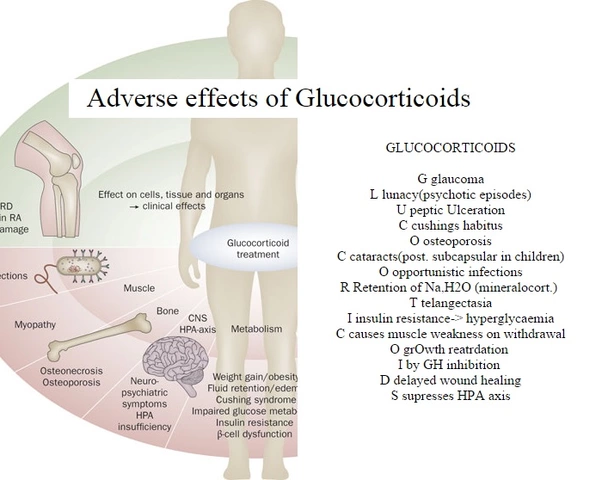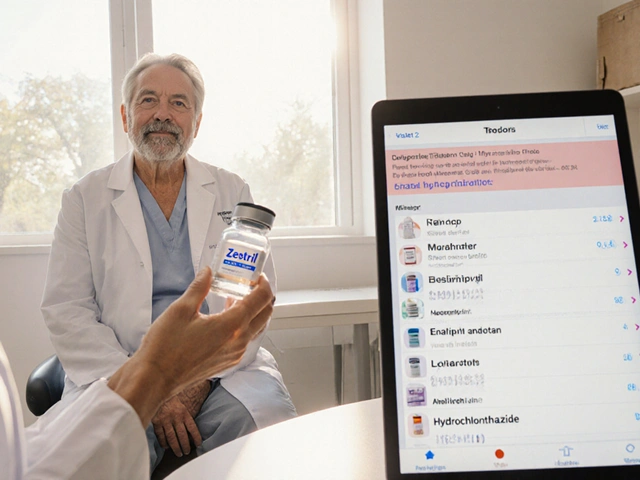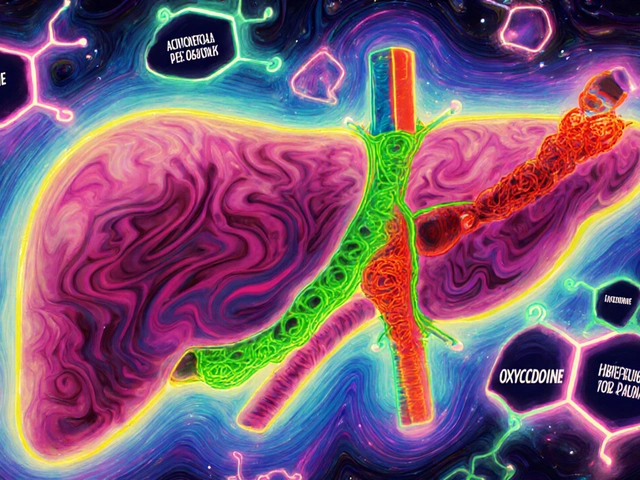Opioid Safety Calculator for Liver Disease
Calculate Safe Opioid Dose
Based on Child-Pugh liver disease severity and opioid type. Results show recommended dose range and critical risk factors.
When your liver is damaged, even common pain medications can turn dangerous. Opioids like morphine and oxycodone are often prescribed for chronic pain, but if you have liver disease, your body can’t process them the way it used to. This isn’t just about reduced effectiveness-it’s about toxicity building up silently in your system. Many patients and even some doctors don’t realize how drastically liver disease changes how opioids behave in the body. The result? Higher risk of overdose, confusion, breathing problems, and even coma-even at doses that are considered safe for healthy people.
How the Liver Normally Breaks Down Opioids
Your liver is the main factory for breaking down opioids. Two major systems handle this: cytochrome P450 enzymes and glucuronidation. These processes turn opioids into smaller, inactive pieces your kidneys can flush out. For example, morphine gets turned into morphine-6-glucuronide (M6G), which still helps with pain, and morphine-3-glucuronide (M3G), which can cause seizures and nerve irritation. Oxycodone is broken down mainly by CYP3A4 and CYP2D6 enzymes into active and inactive metabolites.
In a healthy liver, this happens quickly. Oxycodone’s half-life is about 3.5 hours-meaning half the drug is gone from your blood in that time. But when liver function drops, this clock slows down. The enzymes don’t work as well. The pathways get clogged. The drug lingers. And that’s when side effects start piling up.
What Happens When the Liver Can’t Keep Up
Liver disease-whether from alcohol, fatty liver, hepatitis, or cirrhosis-reduces the liver’s ability to process drugs. Studies show that in advanced liver failure, oxycodone’s half-life can stretch from 3.5 hours to over 14 hours on average, and sometimes as long as 24 hours. That’s more than six times longer. Morphine clearance drops by up to 50% in moderate liver disease and even more in severe cases.
But it’s not just about how long the drug stays. The metabolites change too. In liver disease, the balance between helpful and harmful breakdown products shifts. More M3G builds up relative to M6G, increasing the chance of confusion, agitation, and seizures. Even if the original dose seems small, the toxic byproducts accumulate faster than your body can remove them.
What’s worse? Some liver conditions change the enzymes themselves. In alcohol-related liver disease, CYP2E1 becomes overactive, which can speed up the creation of certain toxic metabolites. In non-alcoholic fatty liver disease (NAFLD), CYP3A4 activity drops, slowing down how fast drugs like oxycodone are cleared. So two people with liver disease might need completely different dosing strategies based on what caused their liver damage.
Which Opioids Are Riskiest in Liver Disease?
Not all opioids are created equal when your liver is struggling. Morphine is one of the most dangerous because it relies almost entirely on glucuronidation-a process that shuts down early in liver disease. Even mild impairment can cause morphine to build up dangerously. That’s why many experts avoid morphine in patients with cirrhosis or advanced hepatitis.
Oxycodone is also risky. In severe liver impairment, its maximum concentration in the blood can spike by 40%. That means a standard 10 mg dose could act like 14 mg. Starting doses should be cut to 30%-50% of normal. Even then, patients need close monitoring for drowsiness, slow breathing, or confusion.
Methadone is tricky. It’s broken down by multiple enzymes, so it’s less dependent on any single pathway. But there’s no solid dosing guide for liver disease. Doctors have to guess based on experience, and that leaves room for error. Fentanyl and buprenorphine are often better choices because they’re metabolized differently. Buprenorphine, especially, has a lower risk of respiratory depression and is less affected by liver damage. Transdermal patches (like fentanyl patches) can help because they bypass the liver on first pass-delivering the drug directly into the bloodstream through the skin.

How Liver Disease Changes Dosing Rules
There’s no one-size-fits-all rule, but there are clear patterns. For early liver disease (Child-Pugh Class A), reduce opioid doses by 25%-50% and keep the same dosing interval. For moderate disease (Class B), reduce doses by 50%-75% and extend the time between doses by 1.5 to 2 times. In severe disease (Class C), avoid morphine and oxycodone entirely if possible. Use buprenorphine or transdermal fentanyl at the lowest possible dose, and check in every few days.
One key mistake doctors make is assuming that if a patient feels pain relief, the dose is fine. But pain relief doesn’t mean safety. Toxic metabolites can build up without obvious signs until it’s too late. That’s why monitoring isn’t just about pain-it’s about neurological changes. Slurred speech, extreme drowsiness, slow breathing, or unexplained confusion are red flags.
Long-Term Risks: Opioids Making Liver Damage Worse
The problem doesn’t stop at metabolism. Chronic opioid use might actually make liver disease worse. Studies now show opioids disrupt the gut microbiome-the trillions of bacteria living in your intestines. This imbalance, called dysbiosis, lets toxins leak from the gut into the liver through the portal vein. That triggers inflammation, which can accelerate fibrosis, cirrhosis, and even liver cancer.
This is a hidden feedback loop: liver disease slows opioid clearance → opioids build up → opioids damage gut bacteria → gut toxins flood the liver → liver gets worse → opioids clear even slower. It’s a cycle that’s rarely discussed in pain management, but it’s real. Patients on long-term opioids for chronic liver disease need more than just pain control-they need gut health support, too.

What Patients Should Ask Their Doctors
If you have liver disease and are on opioids, here are five questions to ask:
- Which opioid am I taking, and how is it processed by the liver?
- Has my liver function been tested recently? What’s my Child-Pugh score?
- Am I on the lowest effective dose? Could I switch to something safer like buprenorphine?
- Are you monitoring me for signs of toxicity, not just pain control?
- Should I be tested for gut microbiome imbalance or consider probiotics?
Don’t assume your doctor knows all the risks. Many still rely on outdated guidelines that don’t account for modern research on opioid metabolism in liver disease. Be your own advocate. Bring printouts of studies or ask for a consultation with a pain specialist or hepatologist.
What’s Still Unknown
There are big gaps in our knowledge. We don’t have clear dosing rules for fentanyl, hydromorphone, or tramadol in liver disease. We don’t know how much opioid use contributes to liver cancer progression. And we still don’t have reliable blood tests to measure opioid metabolite buildup in real time.
Research is moving forward. Some labs are testing wearable sensors that track breathing and brain activity to catch early signs of opioid toxicity. Others are developing algorithms that adjust doses based on liver enzyme levels and gut biomarkers. But until those tools are widely available, caution is your best defense.
For now, the rule is simple: if your liver is damaged, opioids are a high-risk tool. Use them only when absolutely necessary, at the lowest possible dose, with close monitoring. And always ask: Is this helping me live better-or just hiding the pain while making my liver worse?
Can I still take opioids if I have cirrhosis?
Yes, but with extreme caution. Morphine and oxycodone are generally avoided in cirrhosis due to high risk of toxicity. Buprenorphine or transdermal fentanyl are safer options, but doses must be reduced significantly-often by 50%-75%. Close monitoring for drowsiness, confusion, or slow breathing is essential. Never increase your dose without consulting a specialist.
Why is morphine dangerous in liver disease?
Morphine is metabolized almost entirely by glucuronidation, a liver process that shuts down early in liver disease. This causes morphine and its toxic byproduct, M3G, to build up in the blood. M3G can cause seizures, agitation, and nerve damage-even at low doses. Studies show morphine clearance drops by over 50% in moderate liver disease, making it one of the riskiest opioids for these patients.
Does alcohol-related liver disease affect opioids differently than fatty liver disease?
Yes. In alcohol-related liver disease, the enzyme CYP2E1 becomes overactive, which can speed up the production of toxic opioid metabolites. In fatty liver disease (NAFLD), CYP3A4 activity drops, slowing down how fast drugs like oxycodone are cleared. This means two patients with liver disease may need opposite dosing adjustments depending on the cause. Alcohol-related damage increases risk of sudden toxicity; fatty liver increases risk of slow buildup.
Can buprenorphine be used safely in liver disease?
Buprenorphine is one of the safest opioids for liver disease. It’s metabolized by multiple pathways and has a ceiling effect that limits respiratory depression. Studies show its half-life doesn’t increase dramatically even in severe cirrhosis. It’s often preferred over morphine or oxycodone. However, doses still need to be lowered in advanced disease-usually by 30%-50%-and patients should be watched for sedation.
Do opioid patches (like fentanyl) work better for liver disease patients?
Yes, transdermal patches like fentanyl can be safer because they bypass the liver’s first-pass metabolism. Instead of being processed by the liver right after swallowing, the drug enters the bloodstream slowly through the skin. This leads to more stable blood levels and less risk of toxic spikes. However, they still require dose adjustments in severe liver disease and can accumulate over time. Never use patches without medical supervision.








November 27, 2025 AT 18:48
king tekken 6
so like... i read this whole thing and my brain just went "wait so my grandpa’s pain meds might be slowly killing him and no one told him?" 😅 like, i thought opioids were just addictive, not... liver bombs? this is wild. my aunt’s on oxycodone for back pain and her liver’s kinda iffy, but her doc just said "keep taking it". yikes.
November 28, 2025 AT 17:55
DIVYA YADAV
THIS IS A GLOBAL PHARMA CONSPIRACY. THEY WANT YOU SICK SO YOU KEEP BUYING DRUGS. WHY IS MORPHINE EVEN ON THE MARKET IF IT KILLS LIVERS? THEY’RE PROTECTING BIG PHARMA, NOT PATIENTS. THE GOVERNMENT KNEW. THE DOCTORS KNEW. BUT THEY LET IT HAPPEN BECAUSE THE PROFITS ARE TOO BIG. INDIA HAS BEEN WARNED FOR YEARS, BUT AMERICA STILL PUSHES THIS TOXIN. STAND UP, PEOPLE!
November 29, 2025 AT 03:44
Kim Clapper
While I appreciate the clinical depth of this article, I must express my profound concern regarding the lack of regulatory oversight in pharmacokinetic adaptations for hepatic impairment. The normalization of opioid prescriptions in the context of chronic liver disease is not merely a medical oversight-it is an institutional failure of ethical stewardship. Furthermore, the absence of mandatory liver enzyme testing prior to opioid initiation constitutes a breach of the standard of care. I urge all practitioners to consult the 2023 AASLD guidelines, which explicitly prohibit morphine in Child-Pugh B/C patients. This is not opinion. It is protocol.
November 29, 2025 AT 18:17
Jake Ruhl
ok so here’s the thing nobody talks about - if your liver is messed up, why are you even on opioids in the first place? like, pain is a signal, right? it’s your body screaming "something’s wrong!" and instead of fixing it, we just numb it with drugs that make your liver do a backflip? that’s like putting a bandaid on a broken leg and then giving it a shot of whiskey. i’ve seen people on these meds for years, and their liver just... gives up. it’s not pain management. it’s pain avoidance with a side of slow suicide. and yeah, i know that sounds harsh but someone’s gotta say it.
December 1, 2025 AT 09:10
doug schlenker
This is such an important topic. I’ve got a friend with cirrhosis who was on oxycodone for years - she didn’t even know her liver was failing until she started nodding off in the middle of conversations. The shift to buprenorphine changed her life. She’s more alert, less confused, and actually sleeping through the night. It’s not about cutting pain meds entirely - it’s about switching to ones that don’t turn your body against itself. If you’re on opioids and have liver issues, please, please talk to your doctor about alternatives. You deserve to live, not just survive.
December 3, 2025 AT 02:29
Hannah Magera
my dad’s got NAFLD and takes tramadol for arthritis. i’m gonna print this out and hand it to his doctor tomorrow. i had no idea fatty liver affects how drugs are broken down. he’s always been so tired and spaced out - i thought it was just aging. now i wonder if it’s the meds. thanks for explaining the enzyme stuff in plain words. i’m gonna ask if they can test his CYP3A4 levels. also, probiotics? that’s new to me. gonna look into that too 😊
December 4, 2025 AT 17:28
Alexander Rolsen
Stop. Just stop. This isn't medicine. This is corporate negligence wrapped in a white coat. They knew. They knew morphine builds up. They knew the metabolites cause seizures. They knew the gut-liver axis was a thing. But they didn't change the guidelines because lawsuits are cheaper than reform. And now? Now we're all just guinea pigs in a profit-driven experiment. You think your doctor cares? They're paid by the system. You're a number. A refill. A statistic. Wake up.
December 4, 2025 AT 17:31
Leah Doyle
OMG I JUST REALIZED MY COUSIN IS ON MORPHINE AND HER LIVER IS Failing 😭 this article literally explains everything. She’s been so confused lately and her family thinks she’s just "getting old." but now I get it. I’m sending this to her daughter right now. Also, buprenorphine?? I didn’t even know that was a thing. Thank you for making this so clear. ❤️
December 6, 2025 AT 03:32
Alexis Mendoza
It’s funny how we treat pain like it’s the enemy, when really it’s just the messenger. We numb the message instead of listening to the reason it’s there. If your liver is struggling, maybe the pain isn’t just in your back - maybe it’s your body asking you to slow down, to eat better, to stop ignoring the signs. Opioids don’t fix the problem. They just make you forget you have one. And that’s not healing. That’s avoidance with a prescription.
December 6, 2025 AT 06:18
Graham Moyer-Stratton
Morphine bad. Buprenorphine better. Dose down. Watch for drowsiness. Done.
December 7, 2025 AT 15:45
tom charlton
It is imperative that healthcare professionals adopt a proactive and evidence-based approach to opioid prescribing in patients with hepatic insufficiency. The data presented in this article underscores the necessity for individualized pharmacokinetic assessments and the prioritization of agents with reduced hepatic metabolism, such as buprenorphine and transdermal fentanyl. Furthermore, routine monitoring of neurological function and liver enzymes is not optional-it is a fundamental component of responsible clinical practice. I commend the author for this meticulously researched and clinically vital contribution to the field.